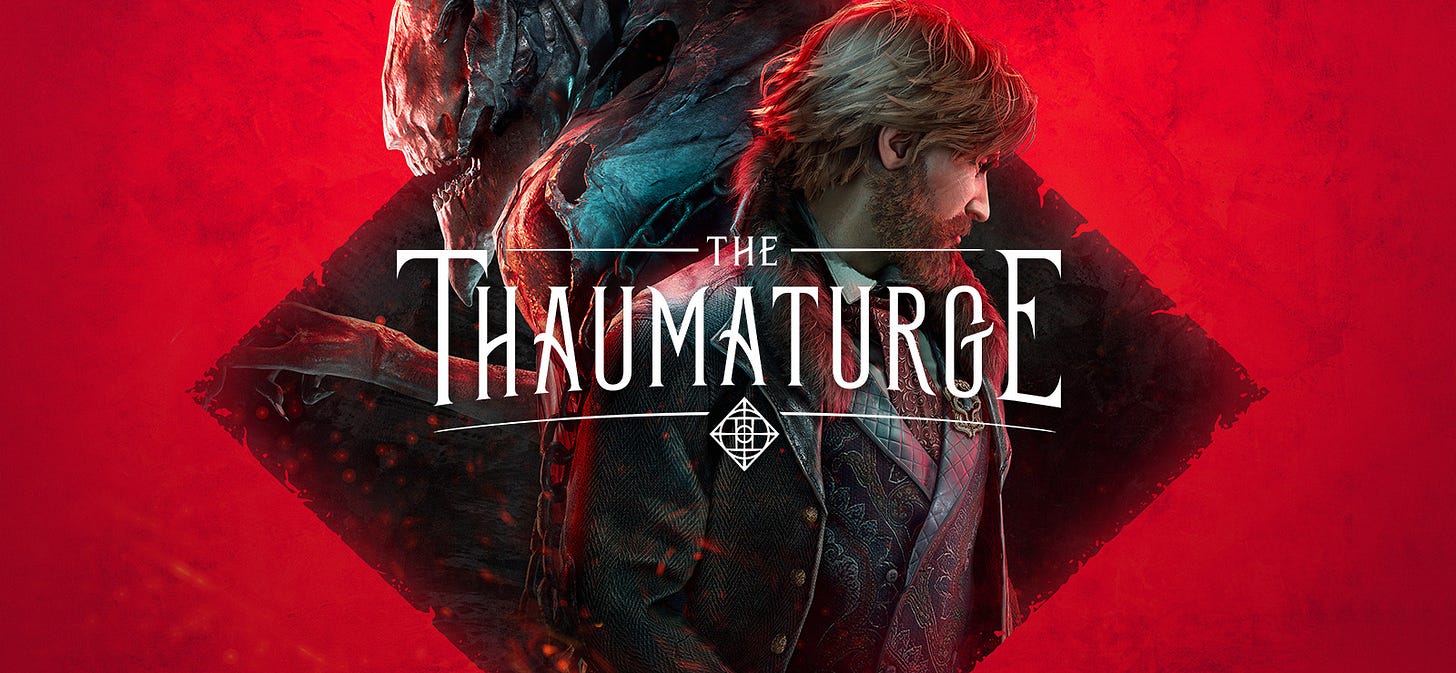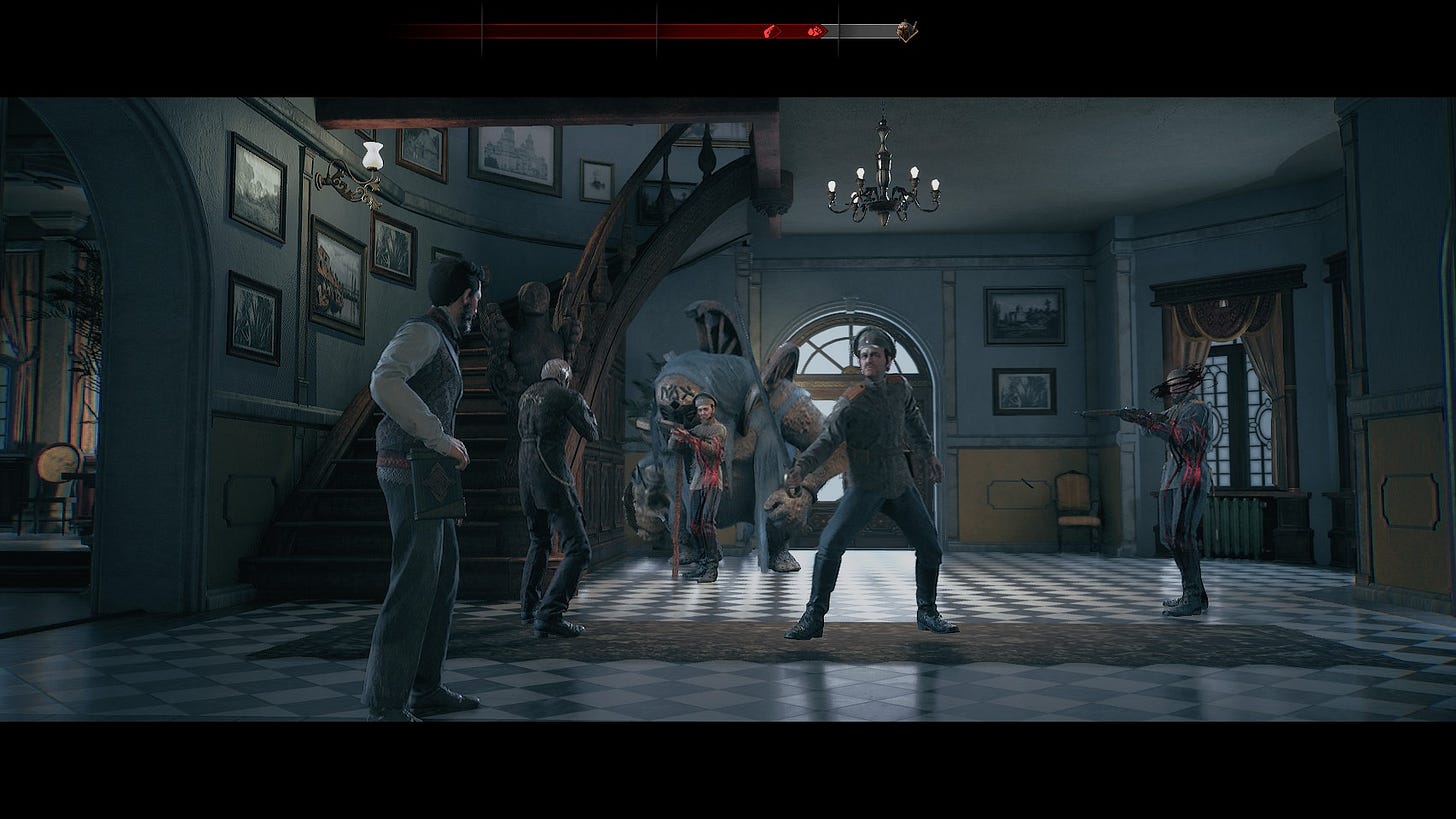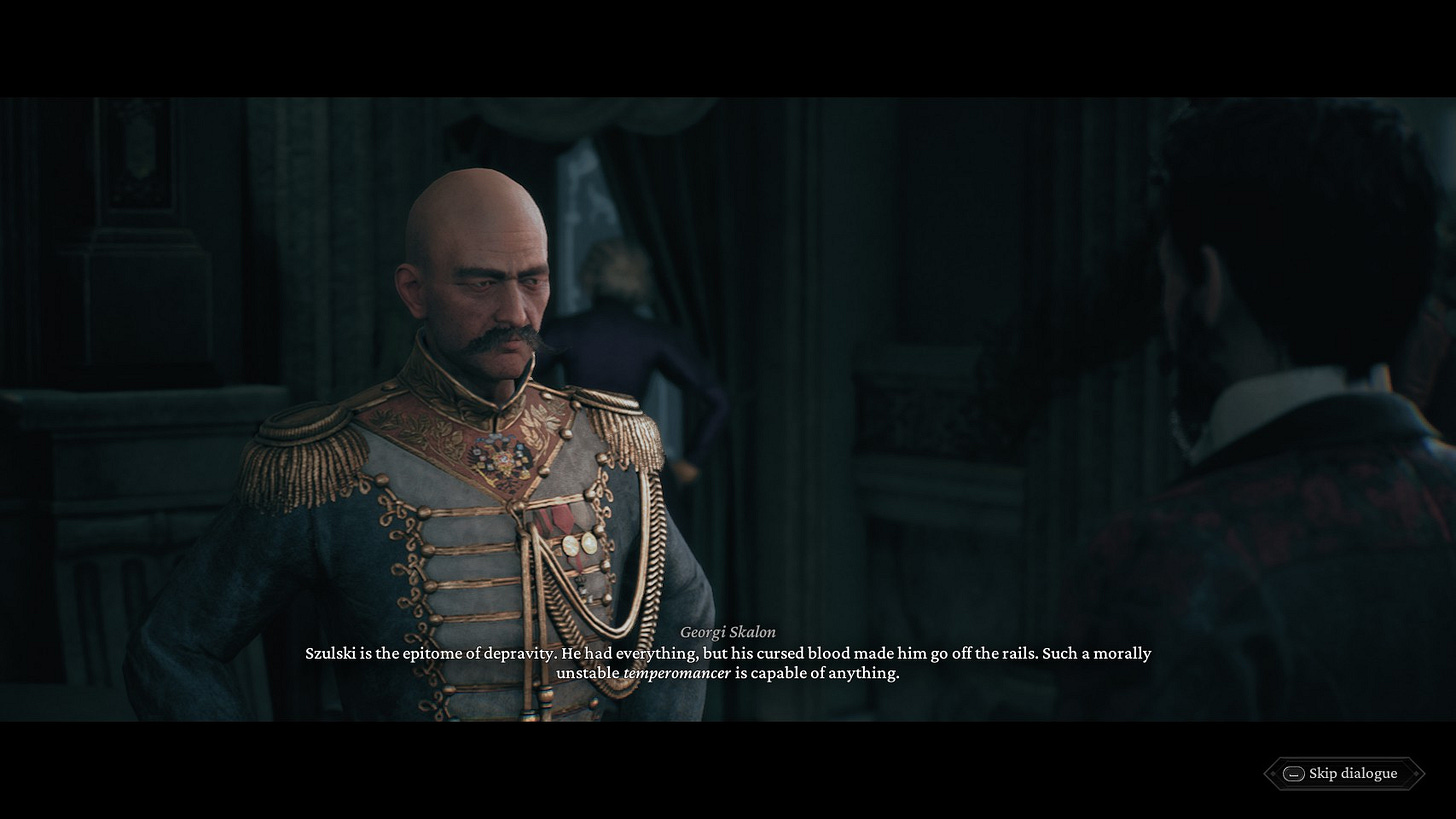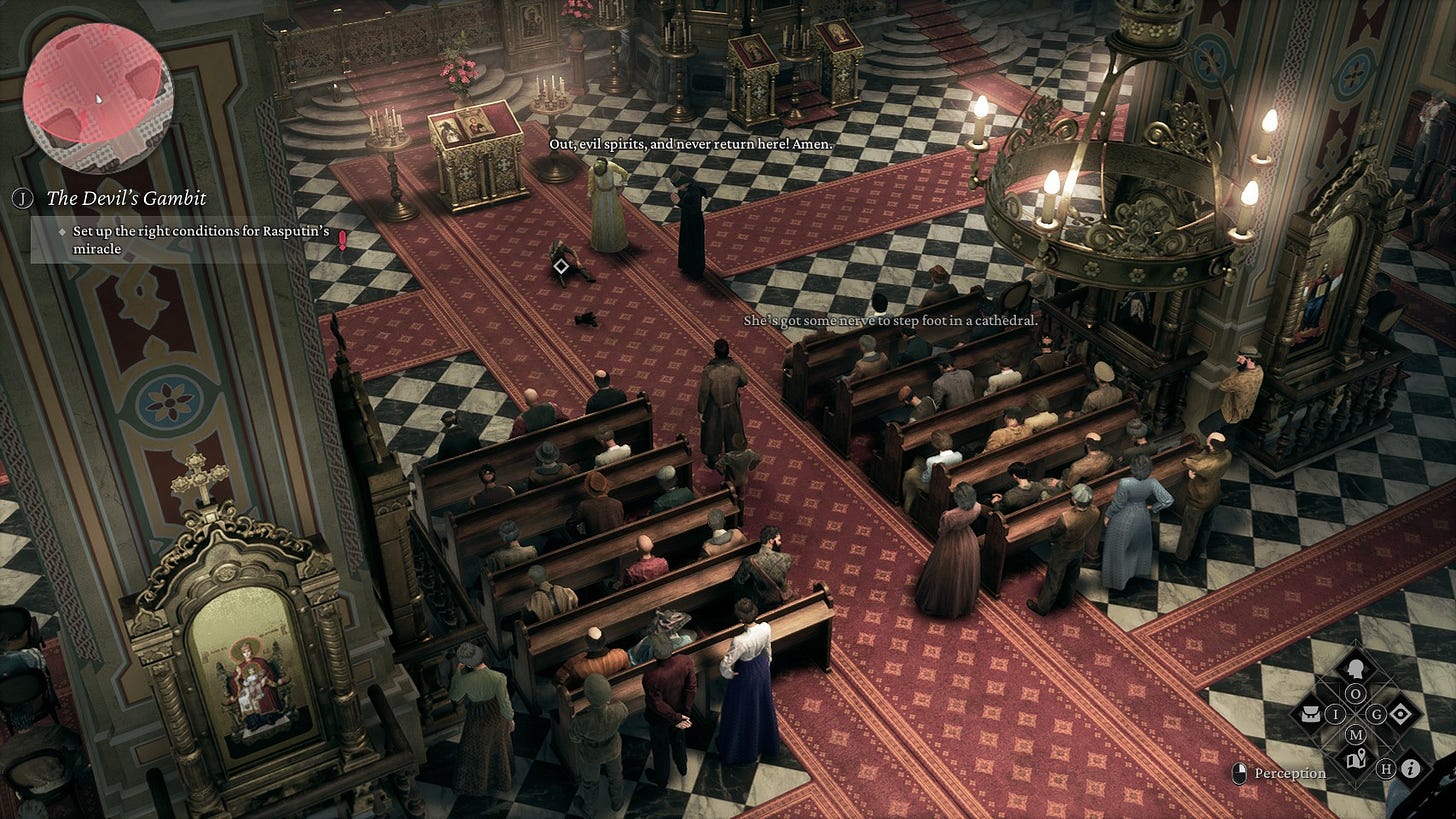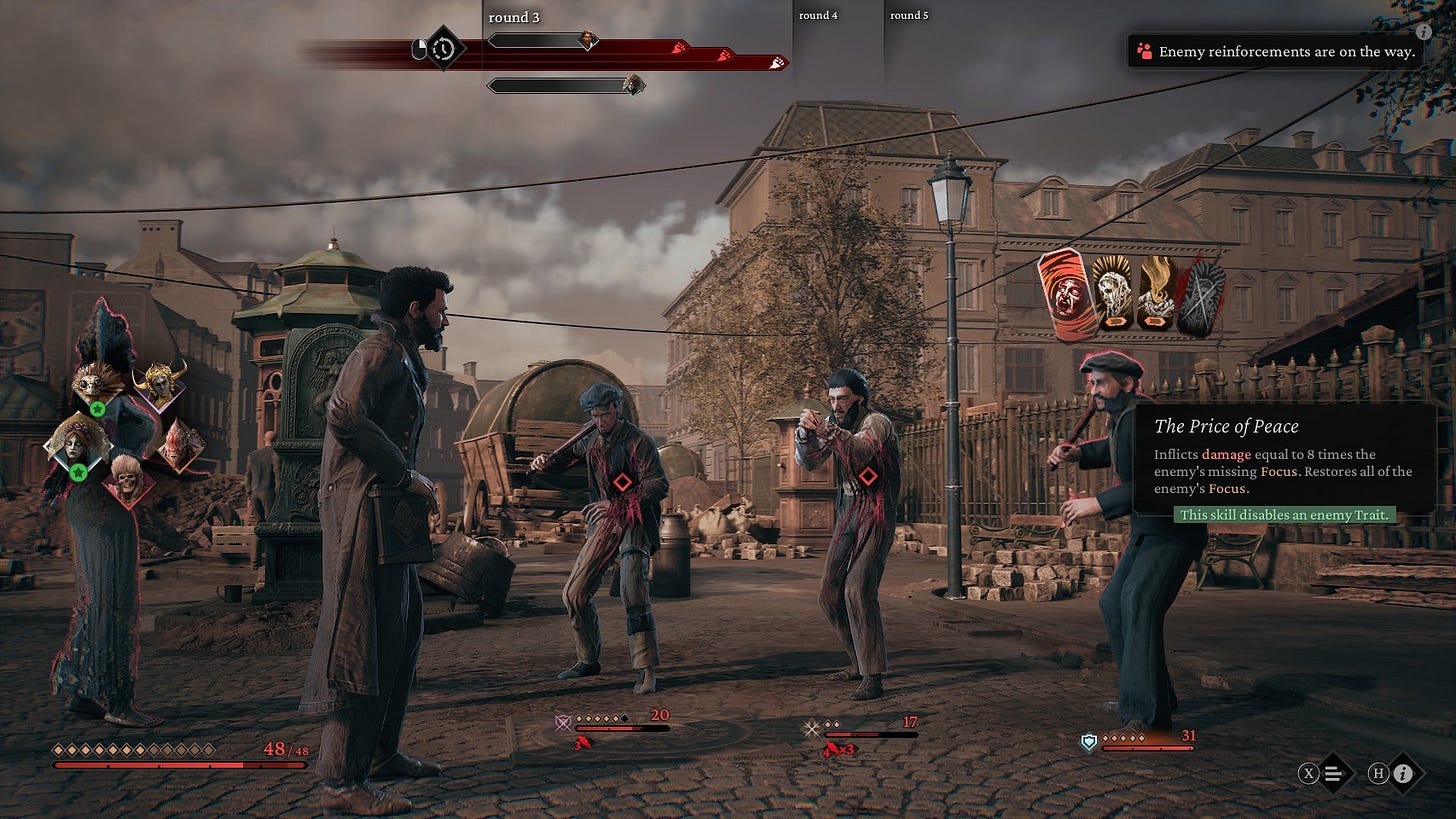The Thaumaturge — Polish Pride
Review
In my preview, I referred to The Thaumaturge as a lonely game for lonely men. Halfway in my playthrough, I had three salutors living in my head, including the Cossack warrior Upyr. As I chased the fourth salutor with an estranged childhood friend, we went on a pub crawl in the Warsaw city centre. The city is full of people and creatures whose stories you investigate to find clues and reach conclusions. You don’t slay monsters; you try to understand them and bring them into the fold.
The Thaumaturge may not be what some fans of Witcher games expect, but it is a compelling debut title by Fool’s Theory (their previous title, Seven, was a collaboration with IMGN.PRO). The game won’t break new ground in terms of gameplay, but this brand of hyper-historical fantasy is innovative and might appeal to aging fans, such as myself, who find ourselves bored by most fantasy.
Salute the Salutors
At one point, I thought I was playing on the Balanced (normal) difficulty, but after being stumped by a rather tough battle to capture the salutor Veles, I decided to lower the difficulty to save time. Then I realized I had been playing on Challenge (hard). On the one hand, there are a few tough battles, especially for salutors; on the other, the hard mode might not be hard enough for hardcore players. There is some incentive to min-max, but the game also allows players to balance the attributes.
I’ve always played Witcher for the stories, the dialogue, the quest design, more than any kind of gameplay challenge. This also goes for The Thaumaturge, where the battles feel like a filler that is expected to be there, but not quite essential. Once you understand the mechanics, most of the fighting is on autopilot: the salutors disable the adversaries’ skills and shields so you can cause damage through attacks and spells. The late game amps up the difficulty in a few fights, but it’s not that rough.
Flickering Souls
I noticed some flickering sometimes in the animation of the dialogue, but overall the game is fluid, and the cutscenes are well-made. You can move in the levels by holding down the mouse button or using WASD scheme; but sometimes the character gets stuck in a few corners. The level design is gorgeous and intricate; it’s full of nooks and corners worth exploring, with points of interests and bits of lore here and there.
The flickering seems to be tied to different eye lines in the animation of the dialogue. At one point, Wiktor kept flickering back and forth, looking to his right and then looking ahead, dividing his attention between NPCs. It didn’t happen all the time, but it was noticeable when it did happen. This should be solved with a few patches, but it was noticeable in the pre-release version I played.
Warsaw Sights
The setting and ambience of Warsaw and its buildings, environments, and NPCs look excellent in the isometric levels, which make it fun to explore the nooks and corners to find bits of lore, clues, and new quests. There are more than enough side quests to occupy you beyond the main quest, and plenty of collectibles with bits of history and storytelling. This is what the game does best: it brings an old city to life and makes it something worth knowing about.
To find clues, you have to snap your fingers and follow the glowing red thread around the levels. Sometimes you see red flickering lights and when you get close enough, you are able to interact with them to investigate. The text in these notes is somewhat verbose, but the writing is mostly interesting. This is how the game conveys the thaumaturge’s capacity to learn a person’s secrets without asking questions directly.
Polish Pokémon
Every time you catch a new salutor, Wiktor turns sweaty and looks tired. Then he has to meet with Rasputin, who can hypnotize him so he can stop sweating. In my view, this diminished the actual impact and value of catching a new salutor. Collecting them like Pokémon is not that fun, though I love their design. It would have been more compelling if the player had to work harder to take on each salutor. Perhaps even not being able to collect them all and having to make more hard choices.
At one point, two guys in the streets asked me if I preferred beer or vodka, and no matter what I said, they wanted me to fight them. It looks like Polish people like to fight as much as Irish people. There are quite a few moments like this where I wished I could reach a peaceful resolution, but the combat felt inevitable most of the time, other than a few crucial points in some quests with flexible dialogue options.
Standing on the Shoulders
At times The Thaumaturge felt like an isometric walking simulator with clues spread out in levels, so I just have to follow the thread to find them. The investigation sometimes felt less like putting together clues and more like collectathons. There are so many conclusions that they end up feeling underwhelming. The writing in all these conclusions often seemed more urgent than the quests were.
The endgame had a few surprises in terms of player choice and its consequences. My character was greedy for all the salutors he could get, and there was a very real consequence for his greed. It added enough to the story to make me want to play it through once again and make a different choice. This is what I felt after my first playthrough of The Witcher 1: the urge to go back and reconsider the moral dilemmas.
That said, The Thaumaturge is not The Witcher; it’s not designed to take you on the lonely path so you can hunt monsters for challenge and alchemy ingredients. Instead, it’s an urban, sophisticated take on the monster hunter who is able to absorb the monsters and their flaws; what players do with those monsters and flaws is up to them. I enjoyed it for what it is: a psychological and political thriller adventure with RPG elements, steeped in Polish and Slavic folklore.
Disclosure: The Thaumaturge was reviewed on PC with a Steam key provided by the publisher over the course of over 40 hours of play time. All screenshots attached were captured during the review process.
Rating: 8.5 / Recommended.
The Good
Original dark fantasy universe;
Cool monster design;
Compelling, rich setting;
Strong writing;
Interesting characters and dialogue;
Replay value of choices and consequences.
The Bad
Uneven combat challenge;
Clue collectathons can be tedious;
A few flickering textures and models.
Gallery

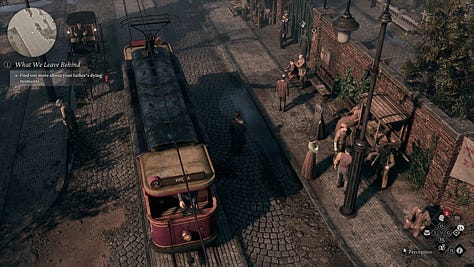
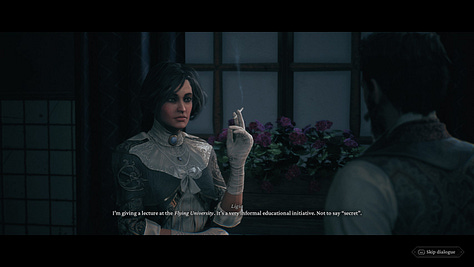

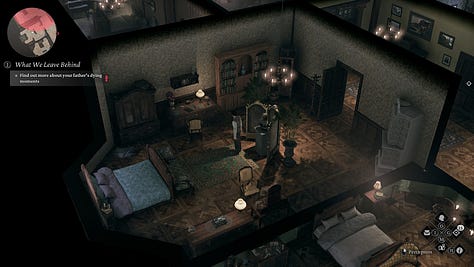
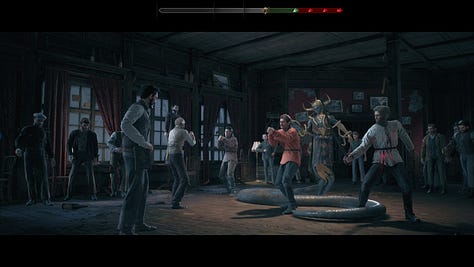
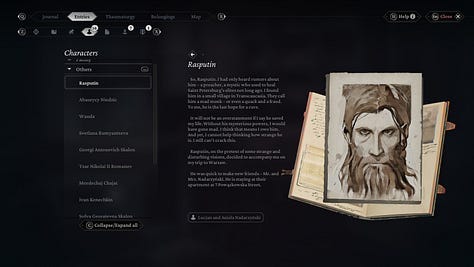
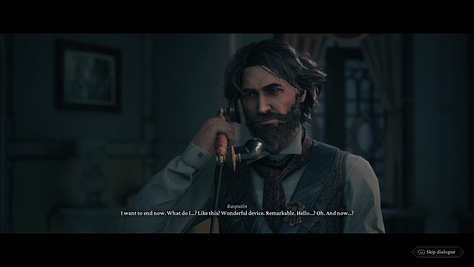
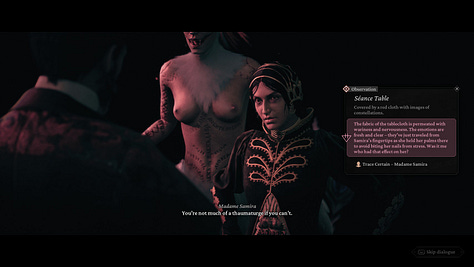
The Thaumaturge is out on Steam, GOG, Epic Games Store, Xbox, and PlayStation. More information is available on the developer website.


